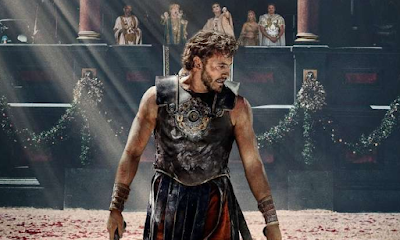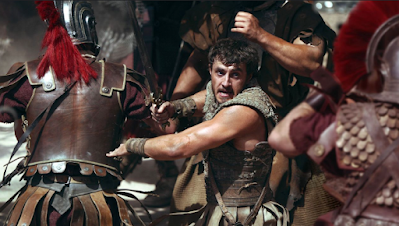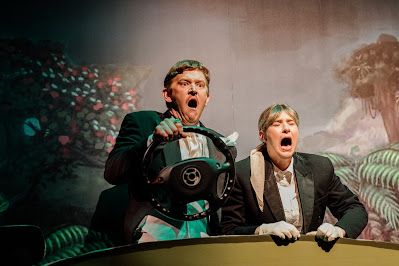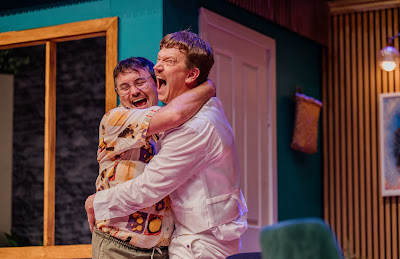Sonic, Knuckles and Tails reunite to battle Shadow, a mysterious new enemy with powers unlike anything they've faced before. With their abilities outmatched in every way, they seek out an unlikely alliance to stop Shadow and protect the planet.
Sonic the Hedgehog 3, directed by Jeff Fowler and written by Pat Casey, Josh Miller, and John Whittington, is an electrifying conclusion to the beloved trilogy. With standout performances from Jim Carrey and Keanu Reeves, this film raises the stakes, delivering high-octane action and surprising emotional depth. It's a thrilling ride that, while relentless in its pacing, solidifies its place as the best instalment in the franchise.
The story wastes no time, throwing viewers straight into the action as the new threat, Shadow the Hedgehog, emerges. From the opening scenes, the film grabs your attention with its fast-paced energy and never lets go. While the non-stop momentum can feel overwhelming at first, the narrative gradually finds its footing, weaving together a coherent and engaging storyline. The frenetic pacing is a double-edged sword—it ensures there’s never a dull moment, but at times, it doesn’t allow the emotional beats to land with the full weight they deserve.
Keanu Reeves as Shadow the Hedgehog is a revelation. Shadow’s tragic backstory, rooted in loss and vengeance, is handled with surprising sensitivity, providing the film with a solid emotional core. Reeves brings a soulful complexity to the character, capturing Shadow’s pain and reclusiveness with precision. His portrayal goes beyond the action, offering a layered and heartfelt performance that elevates the film. Shadow’s brooding intensity and moral ambiguity add a new dimension to the story, making him one of the most compelling additions to the franchise.
Shadow’s conflicts with Sonic and the rest of Team Sonic are thrilling to watch. While many of these clashes stem from misunderstandings that could be resolved with dialogue, they serve as the perfect backdrop for explosive action sequences. These moments, reminiscent of Dragon Ball Z’s climactic battles, are a visual treat, showcasing the film’s exceptional animation and choreography.
On the opposite end of the emotional spectrum is Jim Carrey, returning as the eccentric Dr. Robotnik. Where Shadow embodies loss and vengeance, Robotnik is pure chaotic joy. Carrey’s performance is a masterclass in physical comedy and over-the-top antics. His portrayal of Robotnik, brimming with childlike enthusiasm and manic energy, provides much-needed levity to the darker narrative. It’s a testament to Carrey’s talent that he can deliver comedy without undercutting the story’s emotional depth, and he does twice the work!
Robotnik’s journey in this film is as entertaining as ever. Overcoming his losses from the previous films, his storyline returns him to his larger-than-life personality, both hilarious and formidable. Carrey’s ability to balance menace with mirth makes Robotnik an unforgettable character and a cornerstone of the trilogy’s success. All with the assistance of his ever-doting Agent Stone, another solid performance and the focal point of a very enjoyable subplot.
Despite its relentless pacing, Sonic the Hedgehog 3 doesn’t shy away from emotional storytelling. Shadow’s origin story, rooted in tragedy, is handled with care, giving the character—and the film—genuine emotional heft. These moments, though brief, are impactful, showcasing the film’s ability to balance action with heart. The contrast between Shadow’s sorrow and Robotnik’s joy creates a dynamic emotional landscape that keeps the audience invested.
The film also explores themes of friendship, loyalty, and redemption, particularly through Sonic’s interactions with Shadow. Ben Schwartz’s Sonic remains as charming and witty as ever, serving as the sometimes irrational and impulsive leader of "Team Sonic". His chemistry with Colleen O'Shaughnessey’s Tails and Idris Elba’s Knuckles continues to shine, although the growing cast of characters occasionally struggles to find enough to do.
One of the film’s greatest strengths is its faithfulness to the source material. By minimizing the presence of human characters outside of Robotnik, the story feels more in line with the Sonic games. This creative decision allows the film to fully embrace its video game roots, immersing the audience in a world where anthropomorphic heroes and villains take centre stage. For fans of the franchise, this authenticity is a welcome treat.
Director Jeff Fowler, who worked on the 2005 video game Shadow the Hedgehog, brings a deep understanding of the character and the franchise to this film. His direction ensures that Shadow’s introduction is not only faithful to the games but also compelling for newcomers. Fowler’s experience and passion are evident in every frame, making this a fitting conclusion to the trilogy.
While Sonic the Hedgehog 3 is undeniably entertaining, its breakneck pacing comes at a cost. The constant race from one action sequence to the next leaves little room for reflection, and some emotional moments feel rushed as a result. The film’s ambition to include multiple storylines and characters occasionally stretches its runtime thin, but these shortcomings are minor in the grand scheme of things.
The film builds to an epic climax that is both visually stunning and emotionally satisfying. The final showdown, brimming with high-stakes action and emotional payoffs, leaves a lasting impression. It’s a fitting conclusion to a trilogy that has grown in scope and ambition with each instalment.
Sonic the Hedgehog 3 is a triumph of action, emotion, and character-driven storytelling. Keanu Reeves’ moving performance as Shadow and Jim Carrey’s comedic brilliance as Robotnik are the heart of the film, elevating it above its predecessors. While the relentless action occasionally undercuts its emotional impact, the film’s energy and enthusiasm are infectious.
This third chapter cements Sonic the Hedgehog as one of the best video game adaptations in recent memory. For fans of the franchise, it’s a must-watch. For newcomers, it’s an exhilarating addition to the world of Sonic. With its blend of thrilling action, heartfelt moments, and unforgettable performances, Sonic the Hedgehog 3 races past expectations and into cinematic greatness.
Sonic the Hedgehog 3 will be released in NZ Cinemas on Boxing Day, December 26, 2024
























_2.jpg)
_3.jpg)
_1.jpg)





.jpg)






